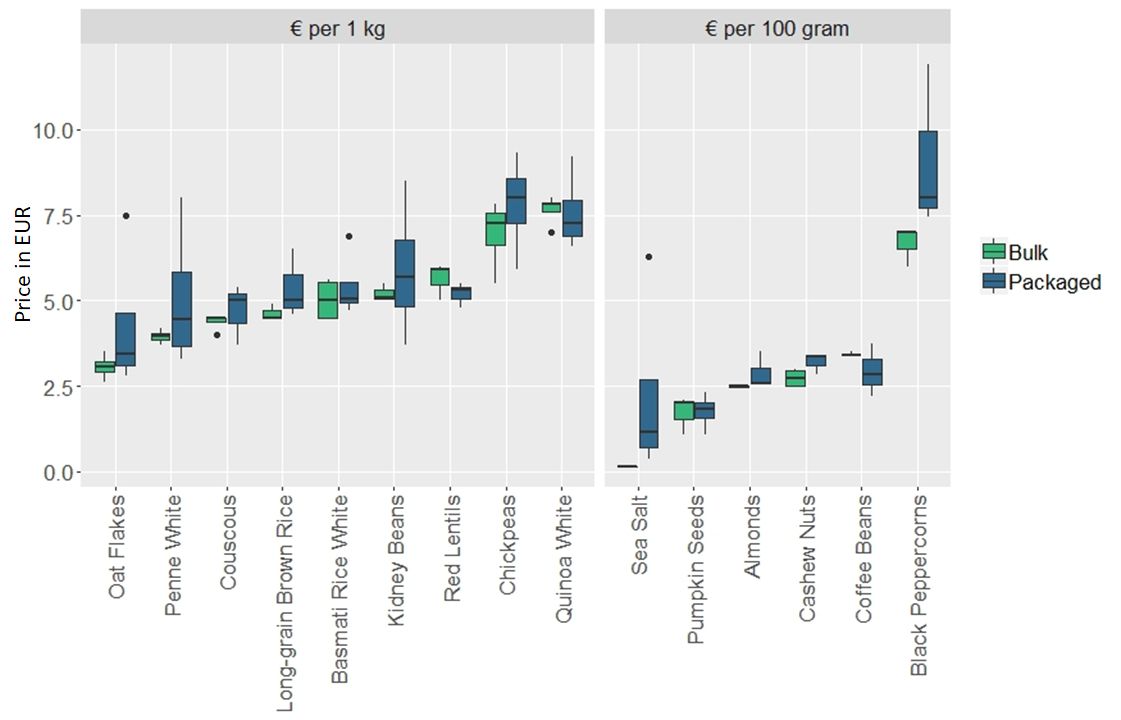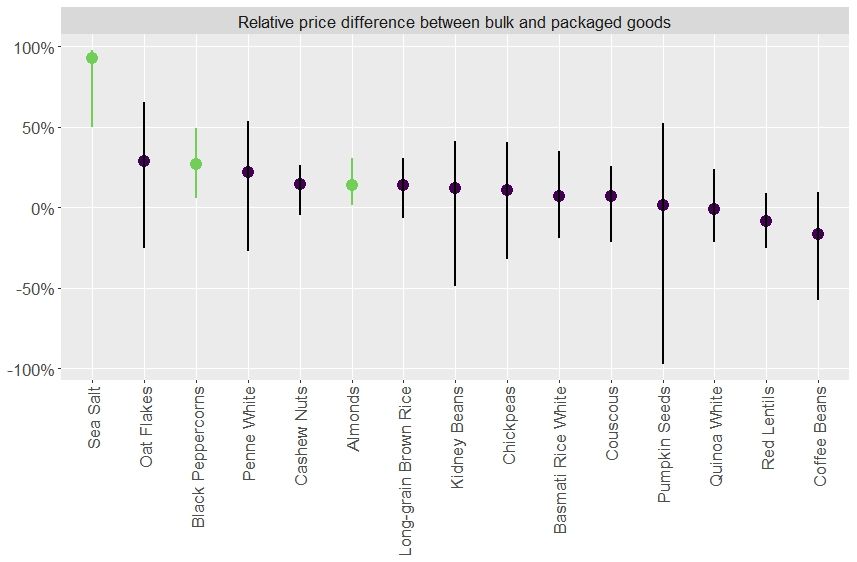Is buying Zero Waste and package free in Dublin more expensive than just going to a “normal” supermarket? Follow along Celia’s journey to several package-free and traditional stores and see where Zero Waste shopping can actually save you money.
Disclaimer: This article is based on a post originally published on Celia’s blog Zero Waste Adventures.
Ever heard or thought the following?
- “Zero Waste shopping must be more expensive than conventional one!”
- “Zero Waste living is just for the rich!”
If yes, then read on and see where that buying package-free can actually save you money in the long run by buying certain products in bulk or straight into your containers. As most loose goods traders focus on locally grown and organic products, it is important to note that all dry goods mentioned here are organic and data on availability and prices were collected in summer 2018 from shops and market stalls in Dublin and from Irish online stores.
Also, we do not want to name specific stores or stalls, as we know that prices and product ranges might change over time and we believe that you should go out there and support all the fantastic people trying their best to make an impact by offering you package-free alternatives for your groceries, personal care products, and consumables.
Celia took her time to collected data from some ‘conventional’ health food stores (e.g. the ‘packaged’ section of the Dublin Food Coop, Nourish and The Organic Supermarket) to see what the actually price difference between shopping package-free and packaged was. Data was sourced from Bare Necessities, Bring Your Own which now trades at Noms, Minimal Waste Grocery and the Dublin Food Coop for loose goods and Nourish, The Organic Supermarket and the Dublin Food Coop for the same goods sold in packaging. To be included, a given product had to be available at least three Zero Waste and three conventional stores.
The first graph below shows a boxplot chart. If you don’t know what a boxplot chart is, then click here. Basically, the bars show you the range of common prices for a given products with the horizontal bar showing you the most common price. The green bars are for package-free prices and the blue bars are for prices of the packaged alternative. For better visualisation prices groups are divided into “Price per 1 kg” (on the left) and “Price per 100 gram” (on the right).

By comparing the size of the bars, you can clearly see that while packaged goods vary widely in their price ranges, the package-free options tend to cost more or less the same independent of where you actually buy them. You can also see that loose goods are actually more often than not the better deal as compared to the packaged alternatives. And in the few cases where they are not, you still have to consider that buying loose goods allows you to buy only as much as you really need and your not stuck with a packaging size the manufacturer wants you to buy. So, if you just need 50 g of lentils for your recipe, you can just go out and get those 50 g instead of buying an entire bag of, say, 500 g of lentils. That saves both money and surplus food from taking up space in your pantry.
In the next graph, you can see the relative price difference (expressed in percentage) between the bulk and packaged goods to see how much you can save (or need to invest) if you’d like to buy package-free. The dots in the middle show you the average price difference and the vertical lines show you the actual range of price differences.

You can quickly make out the two extreme cases: While you can save an incredible 90% on average when buying loose salt (our overall Zero Waste shopping winner!) compared to the packed version; for coffee, however, the unpackaged option will set you back about 15% more on average compared to the packaged alternative.
In summary, there were three products where you can definitely save considerable amounts of money when going for the Zero Waste option: The ultimate winner is salt. There is no excuse here, we all should head out now and buy our sea salt from one of the package-free places! Second in line is black pepper. We all have a pepper grinder at home somewhere. So, next time when you run out of pepper just bring your grinder and get it refilled! And in third place are… almonds! Yummy. One more reason to eat almonds!
So, no more excuses! You don’t need to buy everything package-free and organic, but maybe start with some items that can be easily replaced and maybe even save a bit of money in doing so as well. Make your own small steps. Start with salt or black peppercorns and buy some almonds if you are already there.
Bulk is beautiful!